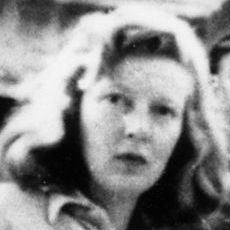Martha Gellhorn? Who's that? Oh, you mean the third Mrs. Hemingway? Martha Gellhorn was one of the first, most read, and prolific female war correspondents. She stowed away on a hospital ship on D-Day to get around the "No Women Journalists Allowed" rule and covered the United States' invasion of Panama. Unfortunately, all anyone seemed to remember in her waning years was her relationship with Ernest Hemingway. She hated that, especially since she wrote more, and sometimes better, than he did. So if you haven't picked up Meg Waite Clayton's latest novel (see below), please do, and read further about one of the most remarkable women of the past century and her exploits.
Meg Waite Clayton's Beautiful Exiles follows Gellhorn's romance with Hemingway from its beginnings in the tragedy of the Spanish Civil War to its demise in the twilight of World War II. Told from Gellhorn's point of view, we see her love of Hemingway's writing blossoming into an affair and then marriage to the man himself. Highly unconventional people, the couple part ways when they realize they are more passionate about writing than about each other. Of course, Hemingway's desire for a more conventional wife and his dark moods combined with his boozing contribute a great deal. Clayton's insights into the how and why of writing are luminous, and the characterizations are remarkable. This is a book you will not want to put down until you finish it.
Amanda Vaill's Hotel Florida deals with the mostly English-speaking guests of the eponymous hotel in Madrid during the Spanish Civil War. The luminaries included not just Hemingway and Gellhorn, but John Dos Passos, Lillian Hellman, and the photographer Robert Capa. The patrons of the Hotel Florida learned all about living and capturing the truth, as well its being the first casualty of war.
Two biographies of Martha Gellhorn stand out. The first is Nothing Ever Happens to the Brave by Carl Rollyson. This is the first attempt at a full-length biography of Gellhorn, who was in her eighties and uncooperative when it was written. Rollyson does manage, however, to disentangle Gellhorn from the suffocating Hemingway myth. Caroline Moorehead had more luck with Gellhorn's heirs in writing Gellhorn. Moorehead has great insight into the emotional toll taken on Gellhorn by her profession and tempestuous relationships, and posits that hers was a life defined by the 20th century.
Of course, there is the major novel Hemingway wrote while with Gellhorn and dedicated to her. For Whom the Bell Tolls distills the sheer awfulness of the Spanish Civil War down to three climactic days in the life of a former college professor on the front lines. Hemingway gets his themes of courage, love (and its loss), and disillusionment across better here than in even his previous acclaimed novels.
However, Beautiful Exiles is Gellhorn's story, so she gets the last word. Much of Gellhorn's war reportage is gathered in The Face of War. Inspired by Hemingway to be concise and remember telling details, she wrote with her conscience. One of Gellhorn's novels, A Stricken Field, deals with Czechoslovakia both before and after being taken over by the Nazis. Gellhorn did her best to warn the United States and the rest of Europe of what awaited them if they did not step in to stop Hitler in this spirited call to arms. Travels With Myself and Another is Gellhorn's sharp-eyed-and-tongued memoir of her travels, mostly with Hemingway. From Moscow to Burma, nothing escapes her notice nor inspection.
Have other favorite books about love and war? Let us know in the comments.



Add a comment to: A Woman of the 20th Century: Martha Gellhorn and The Beautiful Exiles